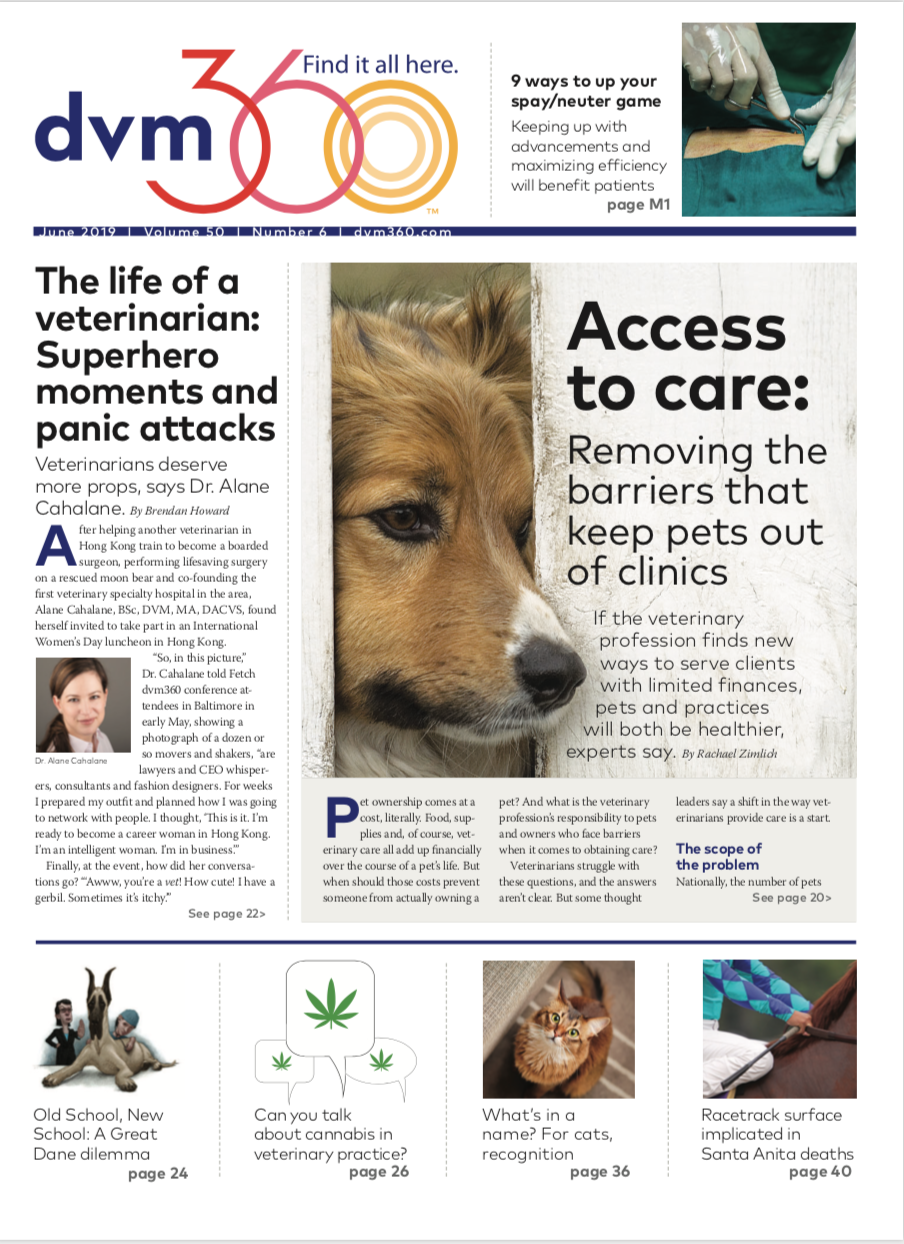A practical approach to evaluating pain in cats
Pain management is fundamental to feline health and welfare. Heres the latest on what veterinary tools work best to assess acute pain in cats.
kozorog/stock.adobe.com

Veterinarians at the University of Montreal in Canada recently developed the Feline Grimace Scale, which evaluates ear position, orbital tightening, muzzle tension and position of the head and whiskers. Assessing pain in feline patients can be difficult, as the process uses primarily subjective methods. However, relatively new methods are helping to refine veterinary recognition and management of patient pain. A recent Journal of Feline Medicine and Surgery article reviewed the latest advancements in acute pain assessment in the cat.
Managing pain for a species that hides it
- Feline pain management miracle: No more grumpy cat!
- 5 drugs in my cat pain toolbox
- Tips for dog and cat owners: Recognizing signs of pain in pets
Physiologic and behavioral changes
Pain causes physiologic changes in heart and respiratory rates, pupil size and various neuroendocrine parameters. However, most of these changes are nonspecific and can also occur due to stress and anxiety. Blood pressure is currently the only physiologic parameter closely correlated with feline pain; however, blood pressure monitoring is not always feasible. Behavioral changes frequently observed in painful cats include the following:
- Reaction to palpation of the painful area
- Withdrawing or hiding
- Decreased appetite
- Hunched posture
- Lowered head position
- Vocalization
- Partially closed eyes
- Decreased grooming activity
- “Feigned sleep” in severe cases
Acute pain scales for cats
Two pain-scoring instruments, the Glasgow Composite Measure Pain Scale: Feline (Glasgow CMPS-F) and UNESP-Botucatu Multidimensional Composite Pain Scale (UNESP-Botucatu MCPS), are validated for use in feline patients. Several other scales are also available, including the visual analog scale, the numeric rating scale, the University of Melbourne Pain Scale and the Colorado Feline Pain Scale; however, these scales are not validated and thus are not recommended for clinical use.
The two validated scales address similar behavioral changes in posture, demeanor, vocalization and interaction with the observer. A revised version of the Glasgow CMPS-F also addresses facial expression, and the UNESP-Botucatu MCPS includes blood pressure measurement as an optional variable. Each scale indicates a cutoff score above which rescue analgesia should be provided. While the Glasgow CMPS-F is appropriate for assessing medical, surgical and trauma-associated acute pain, the UNESP-Botucatu MCPS was validated specifically for pain following ovariohysterectomy.
Each scale has certain limitations. For example, administration of opioids or ketamine may inadvertently affect behavioral parameters and lead to falsely increased pain scores. Also, a side-by-side comparison of the two scales revealed they provide slightly different cutoff values for rescue analgesia in the same patient. Finally, multiple studies have shown that veterinary students record lower pain scores than do graduate veterinarians and anesthesiologists; therefore, users still require appropriate training to recognize signs of pain. The Glasgow CMPS-F and UNESP-Botucatu MCPS both offer online video tutorials with examples of pain-associated behaviors.
The Feline Grimace Scale
Veterinarians at the University of Montreal in Canada recently developed the Feline Grimace Scale, which evaluates ear position, orbital tightening, muzzle tension and position of the head and whiskers. Several unique changes in facial expression are reliable indicators of feline pain. For example, a painful cat may exhibit squinted eyes and an increased distance between the ear tips compared with a pain-free cat.
While the instrument demonstrates reliability and repeatability at detecting pain, studies to determine an appropriate cutoff for rescue analgesia are ongoing.
Link to article: https://journals.sagepub.com/doi/10.1177/1098612X18808103
Reference
- Steagall PV, Monteiro BP. Acute pain in cats: Recent advances in clinical assessment. J Feline Med Surg 2019;21(1):25-34.
Dr. Stilwell provides freelance medical writing and aquatic veterinary consulting services through her business, Seastar Communications and Consulting. In addition to her DVM obtained from Auburn University, she holds a MS in fisheries and aquatic sciences and a PhD in veterinary medical sciences from the University of Florida.
